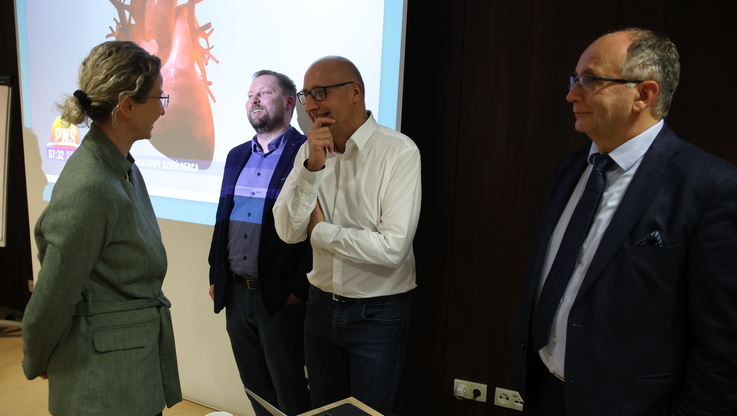Pobierz materiał i Publikuj za darmo
The process of ageing of European societies also involves cities and metropolitan areas. In recent years, the population of residents over 65 years of age increased by 24 percent, and in some places they comprise over 50 percent of all residents.
This trend creates new challenges for cities. “It’s not only the need to increase expenditure on health care or modernising the city’s infrastructure, but also safeguarding the dignity of the elderly. We must not allow senior citizens to feel isolated from society at large,” the authors of the latest ESPON report say. The document is called “The ageing revolution: towards a European Silver Deal?” and reminds its readers that the World Health Organisation has declared 2020-2030 “The Decade of Healthy Ageing” and in January of this year the European Commission published the “Golden Book”, which included solutions to support solidarity across generations.
ESPON’s report features a number of data insights highlighting the (economic, digital and social) exclusion of elderly people. It turns out that nearly one-third of all senior citizens in Europe would be unable to cover any unexpected expenses. 40 percent of these people have never used a computer in their lives.
“Yet another problem is loneliness - it affects 37 percent of Dutch citizens and 40 percent of UK citizens over 65 years of age. The coronavirus pandemic has only added to these grim statistics.
“Loneliness, which directly affects the health of elderly people, is particularly a problem in cities,” the report says, pointing to the higher pace of living and a more pronounced feeling of alienation than in smaller towns.
According to experts, local authorities have a key role to play in improving the quality of life of the elderly. It is local and often fairly simple actions that can have a big impact on the situation of senior citizens.
ESPON's report mentions eight European cities with some of the highest percentages of elderly residents in Europe (more than 20 percent), with predictions that it will rise to over 30 percent by 2030. Each of these cities is going with its own programme to activate seniors:
• Saragossa, Spain - Community Meeting Centres, spaces for the elderly allowing them to meet and participate in conferences, exhibitions, workshops and academic lectures;
• Oslo, Norway - Green and healthy city, sports centres for the elderly and young residents encouraging them to exercise together;
• Göteborg, Sweden - Flexlinjen, free minibuses dedicated to seniors, which allow them to go directly to a location of their choosing;
• Nantes, France - Carte Blanche, a system of discounts for over 60 cultural and sports centres;
• Manchester, United Kingdom - interviews with elderly citizens financed by the city which will become the basis for the city’s programme for the coming decades;
• Barcelona, Spain - the Vincles app, making it easier for elderly people to contact their families and friends using tablets financed and provided by the city authorities;
• Hengelo, the Netherlands - AVEM, support groups for elderly immigrants aimed at bridging the language and cultural gaps.
• Amsterdam, the Netherlands - UP!, an online talk show featuring elderly people, in which they share their experiences and ideas on how to improve quality of life in the city.
Source: PAP MediaRoom
Pobierz materiał i Publikuj za darmo
bezpośredni link do materiału
| Data publikacji | 10.05.2021, 13:13 |
| Źródło informacji | PAP MediaRoom |
| Zastrzeżenie | Za materiał opublikowany w serwisie PAP MediaRoom odpowiedzialność ponosi – z zastrzeżeniem postanowień art. 42 ust. 2 ustawy prawo prasowe – jego nadawca, wskazany każdorazowo jako „źródło informacji”. Informacje podpisane źródłem „PAP MediaRoom” są opracowywane przez dziennikarzy PAP we współpracy z firmami lub instytucjami – w ramach umów na obsługę medialną. Wszystkie materiały opublikowane w serwisie PAP MediaRoom mogą być bezpłatnie wykorzystywane przez media. |




